KURT BEHRENDT
Associate Curator of South Asian Art, The Metropolitan Museum of Art
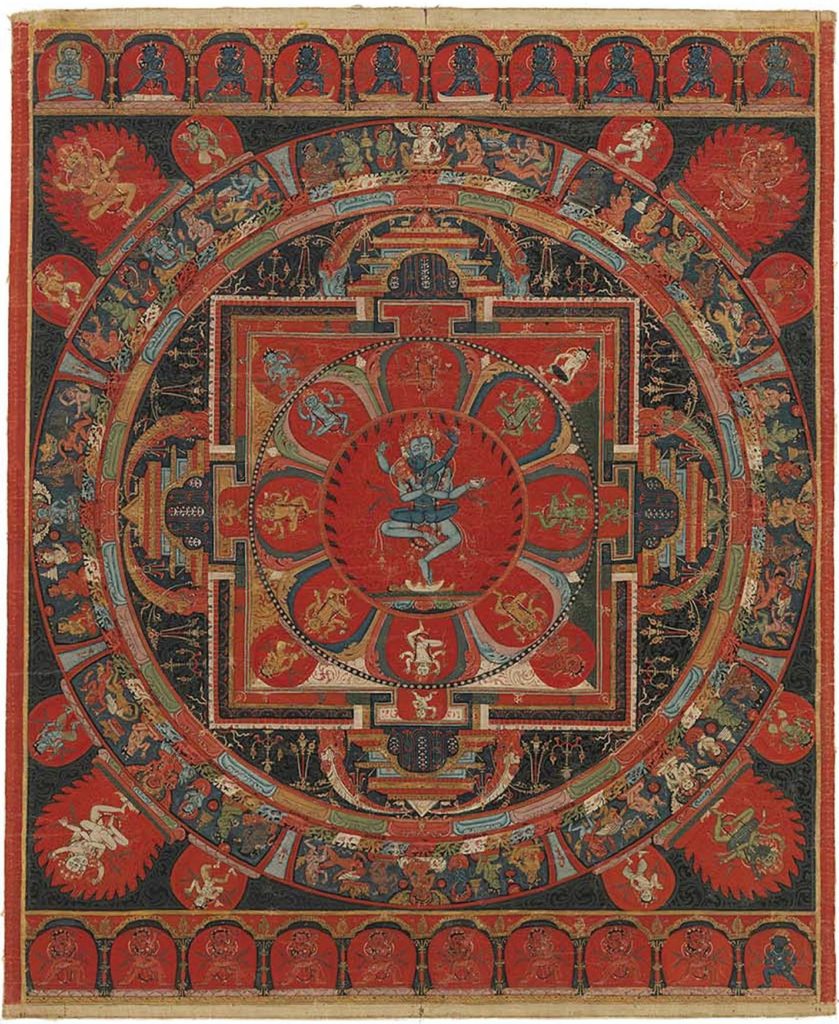
MANY OF the finest Tibetan Buddhist art works ever produced are tantric, or Vajrayana, in nature (1), which is striking as it shows that this enigmatic and inaccessible ideology was valued at the highest levels of society. Given that visualisation and self-identification with the divine is central to tantric practice, perhaps it is not surprising that elite patrons sought the best artists to produce exquisite imagery of this complex Buddhist pantheon. This level of patronage not only speaks to the centrality of tantric Buddhism, but also to the importance of the monks and ascetics who were able to conduct tantric ritual on behalf of the individual and the kingdom.
The concept of Tantra is ancient and probably even predates Buddhism. Looking at the Sanskrit, the root ✓tan means to “stretch out” or to “weave”, while ✓tra is the idea of “instrument”. In a religious context, this speaks to the pattern and structure of ritual, and the very act of setting this potent practice into motion. Related ideas come to have great significance in Hindu and Jain contexts and by about the 8th century AD, Buddhist tantric texts begin to appear in India; the most important were the Guhyasamaja tantra, the Chakrasamvara tantra and the Hevajra tantra. While these texts outline a ritual structure that artworks such as this Hevajra mandala (1) follow, they do not give us an internally consistent definition for the term “tantra”. Rather each presents a set of distinct ideas and practices in ways that are open to multiple interpretations. Important is the Buddhist idea that our perception of reality is illusory, while the divine realm described in the tantras is true and real. Through complex tantric practice and ritual, the individual hoped to access the divine, which exists concretely in the surrounding world. Moreover, tantra allows one to channel this power through his or her body to reach enlightenment rapidly or, alternately, to control some aspect of our material world.
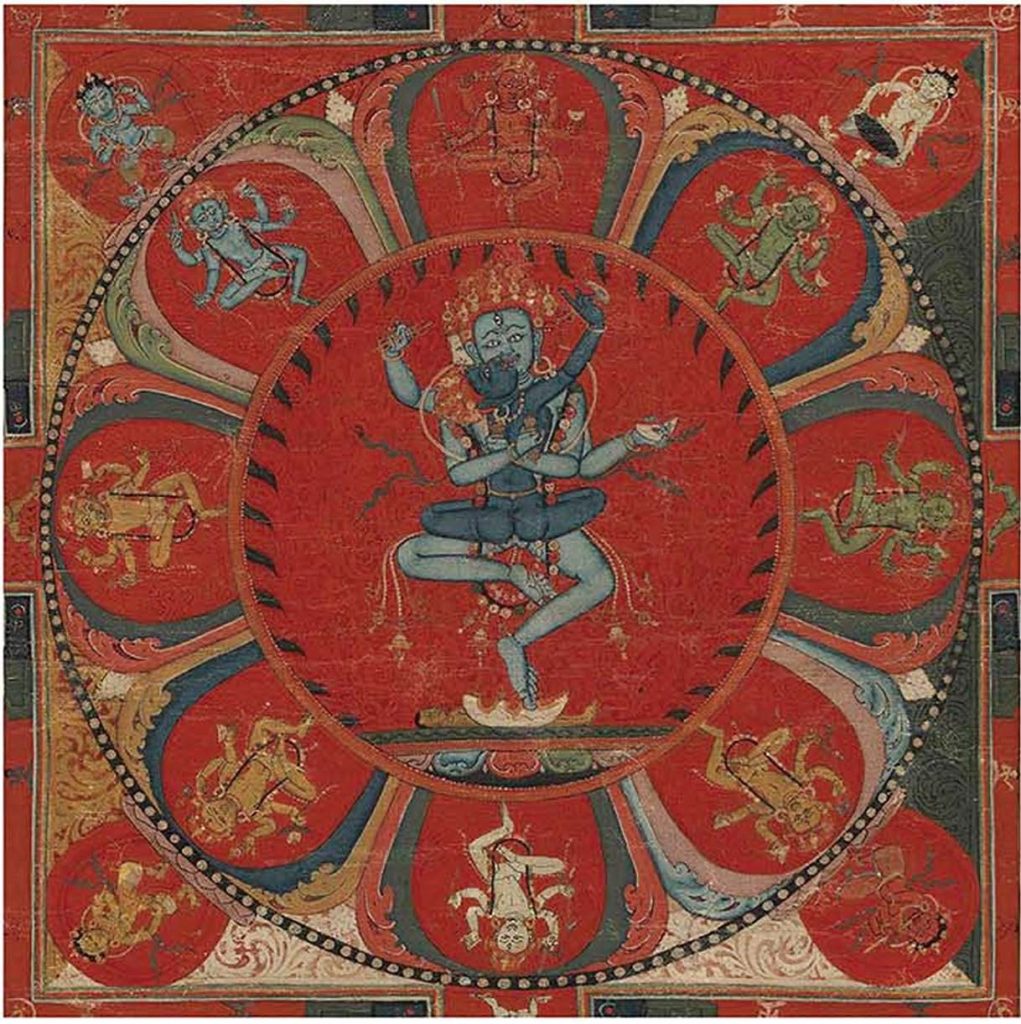
Diagramming and structuring the true nature of reality is the underlying goal of the creation of any mandala. At the centre of this 15th century Tibetan example, Hevajra dances in sexual union with his consort, Nairatmya (2). As with so many Tantric images, the male is fused with the female. In fact, the very name Hevajra can be broken into He (compassion—male) and Vajra (wisdom, emptiness, or shunyata—female). The sexual union between male and female is a way of presenting a model of the whole, and it is an idea that runs through the text of Hevajra tantra. Today tantra has almost become synonymous with yogic sexual practice, but perhaps this misses the point, as it really is about the conceptual unity of qualities associated with the male and female deities, in this instance with compassion and emptiness. Surrounding the main figures are eight yoginis, female tantric adepts who, in Tibet, have the expanded status of being ferocious dakinis (protectors). These central deities are set within a palace framed by four gates. Each gateway takes the form of a vajra, or adamantine thunderbolt. The central spike of the tower is bracketed by makaras (mythical aquatic creatures) that spew garlands from their mouths making up the prongs of the vajra. At the intersection of these four vajra/gateways stand the primary figures of Hevajra and Nairatmya, indicating their position at the unshakable centre of the cosmos.
Grounding this tantric image is the earlier and more mainstream Mahayana Buddhist tradition. The many complex tantric deities are understood as emanations of the five living Mahayana Tathagata Buddhas that preside over the directional Purelands, or celestial heavens, where one could be reborn. At the four corners of the main square of this mandala are colour-coded subsidiary images of Hevajra and his consort, Nairatmya. Together with the central image, they can be associated with the five Tathagata Buddhas: Akshobhya with the central blue Hevajra; Amitabha with the Hevajra at upper right; Amoghasiddhi with the Hevajra at lower right; Vairochana with the Hevajra at lower left; and Ratnasambhava with the Hevajra at upper left. Each Tathagata Buddha presides over a directional Pureland, and correspondingly a tantric Hevajra is present in each of these spheres of existence.
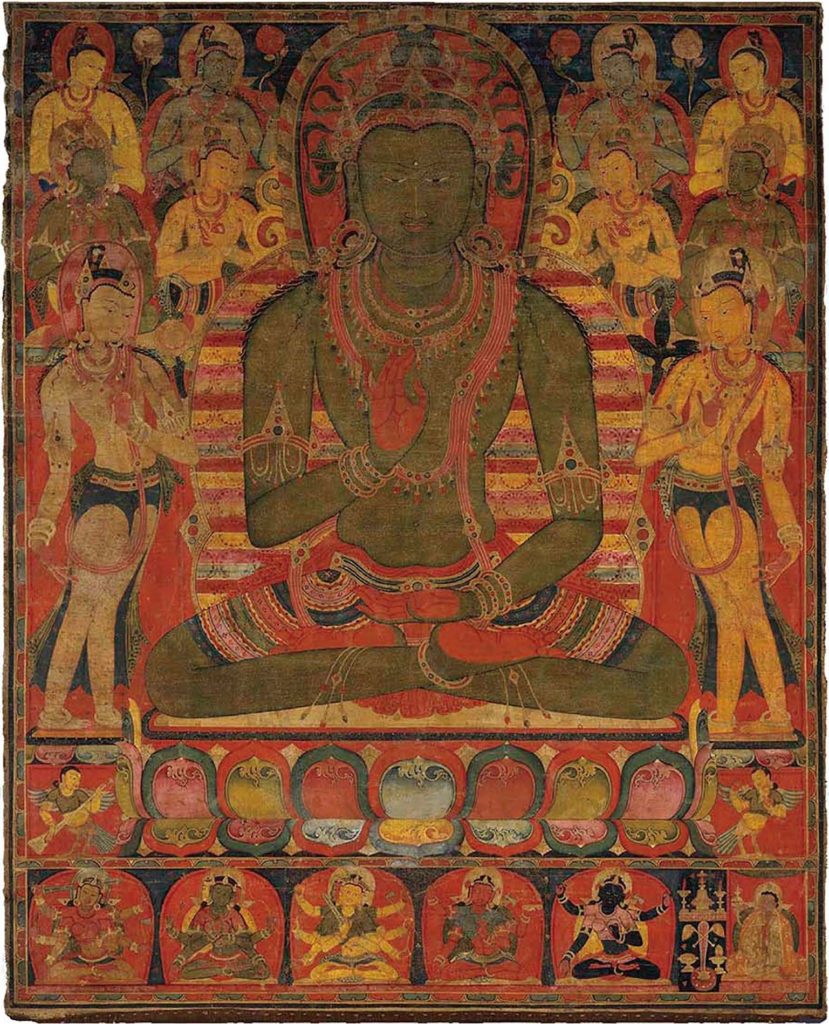

It is often easier to understand Tibetan tantric imagery in light of the extensive Mahayana tradition. For the Tibetan lay and monastic communities, Buddhas, such as this sublime early 13th century Tathagata Buddha Amoghasiddhi (3), would have been central to daily religious life. He sits on a lotus pedestal, flanked by bodhisattvas, while from above celestial figures look down. The key Mahayana idea here is that one can be reborn in Amoghasiddhi’s Pureland and in this way have access to the teachings of this living Buddha, who reveals the path to enlightenment. Still, it is interesting that at the base of this image are five multi-armed Taras wielding weapons. These esoteric goddesses, who were understood to be the consorts of the five Tathagata Buddhas (based on their colour and number), function much like the colour-coded Hevajra images at the corners of the mandala (2). This kind of layering of more complex iconography, related to tantric practice within an otherwise standard Mahayana image, is very common in the Tibetan tradition.
The most important Indian tantric practitioners were ascetic yogins who lived outside the great monasteries. The ideal was that an ascetic individual with strong mental faculties could daringly walk down the more risky tantric path and reach Buddhahood in this life. Through yoga, the propitiation of deities, the recitation of mantras, visualisations, the use of mandalas, and “transgressive acts”, such tantric practitioners attempted to gain power over spheres of existence. If successful, these efforts led to a siddhi, or “attainment”. These siddhi powers can be mundane, such as the ability to fly or attract a lover, or this could be reaching Buddhahood. The key idea is that divine forms are emanations of one’s own mind; in this sense, they are not arbitrary imagination, as they are more real than transitory personality. To put it another way, self-identification with these divine forms is crucial, as they are true and essential to this kind of rapid progress that would otherwise dissolve before the individual could achieve a siddhi. These “Great Achievers”, or Mahasiddhas, came to be extremely important in Tibet and are often represented. Here (4), a 14th century Mahasiddha—perhaps Champaka, given the flower he holds—takes the form of an ecstatic wide-eyed figure, who gestures emphatically. He is a striking contrast to representations of monks or the contemplative Buddhist imagery of earlier periods.
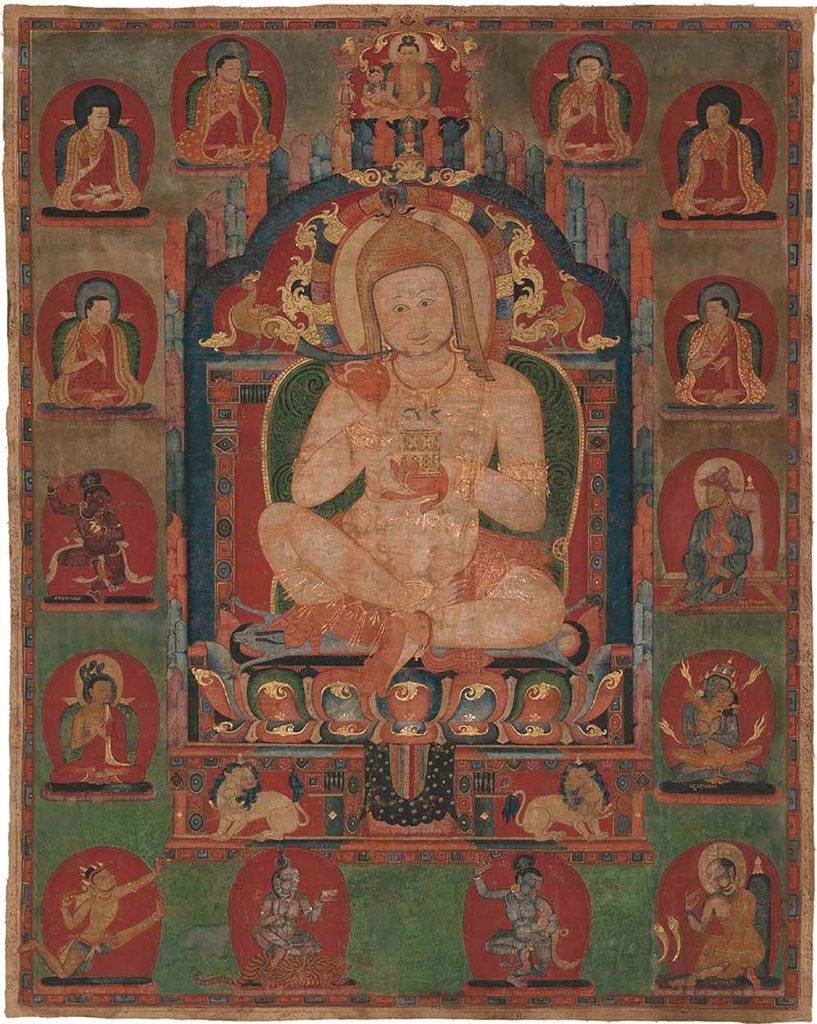

Throughout the history of Buddhism, doctrine was passed from teacher to student going back to the Buddha’s first sermon, when he revealed the path to enlightenment to his first five disciples. Buddhist orders, or schools, are defined by these teacher-student lineages that trace back to key authoritative figures. It is in this light that we can understand this mid-14th century portrait of the Mahasiddha Jnanatapa (5), who sits holding a reliquary, which presumably contains the enlightened remains of the Buddha. Identified by inscription at top left is Onpo Lama Rinpoche (6), an abbot of the Kagyu order from the Taklung monastery, who, in a previous life, was the Indian Mahasiddha Jnanatapa. This relationship between an Indian Mahasiddha and a Tibetan monk is an interesting one, as it speaks to integrating the non-monastic tantric practices of the Indian Mahasiddhas within the mainstream religious tradition of Tibet. The yogins of North India were the progenitors of the established monastic community. The idea that Mahasiddhas were able to employ tantric ritual to channel the divine energy of the concrete world in order to access enlightenment is a type of spiritual legitimacy that proved vitally important to the Tibetan community.
For tantric practices to work, it is essential to visualise, or to self-identify and realise, that a given Buddhist divinity resides within oneself. In essence, the idea is to grasp the true nature of the divinity, which transcends the otherwise illusory nature of the world. Under the guidance of a teacher/guru and in conjunction with specific mantras and practice, the individual can go through the process of being initiated to a deity. The use of images is central to this practice, and sets of initiation cards, tsakalis, were produced for this purpose. Take, for instance, a tsakali initiation card showing Vairochana sitting with his consort (7) that was painted by a Nepali artist for a Tibetan patron probably affiliated with the Nyingma School of Tibetan Buddhism. On the back of this tsakali initiation card are inscriptions that describe how the practitioner is to perceive Vairochana:
Form has the same natural identity as the [five] aggregates.
On account of that, the mind has as its characteristic, uncreatedness.
By the natural state of Vairochana in union with his consort, and by being empowered into bodily meditational state, [may] the siddhi activities become manifest!
As with much of the tantric written tradition, the text is enigmatic, but both teacher and student would also understand Vairochana from other sources. In this case, the main tantra that addresses Vairochana is the Sarvatathagata-tattva-samgraha, which tells us that at the moment of the Buddha Shakyamuni’s enlightenment, the Buddhas of the ten directions snap their fingers and state that he cannot become a Buddha just by inner composure. At this moment, when the Buddha left his physical body and went to the highest heaven in his mind body, the gods bestowed upon him preliminary consecrations followed by the five stages of perfect enlightenment and five formulas of self-consecration; it is only at this point that he became the perfected Buddha, the great Vairochana. After teaching the Yoga tanta on the summit of Mount Meru, he descends again to the everyday world to take possession of his physical body as the Buddha Shakyamuni, after which he defeated Mara and went to spread the Buddhist teachings, or dharma.
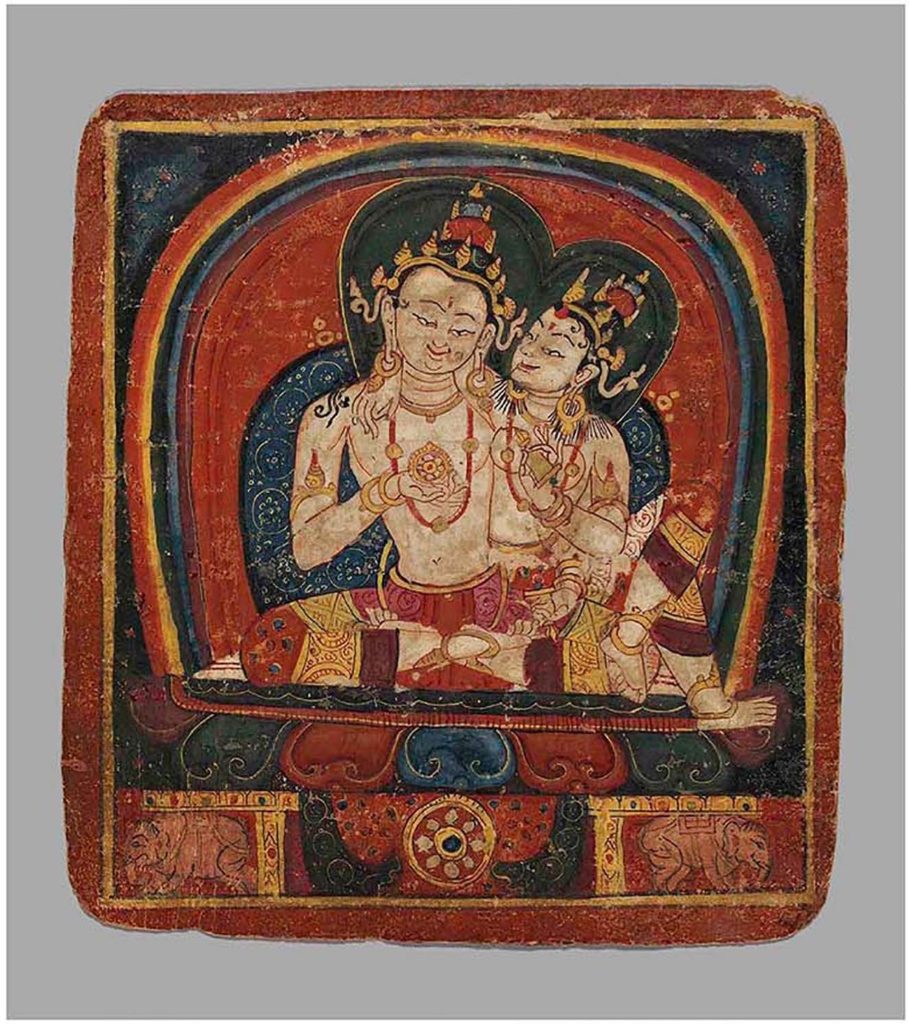
This initiation card is part of a set of twenty-five tsakalis that together form a mandala (8). Each card has a Tibetan letter on its reverse to organise the sequence of the set. If the first card is placed in the middle and the following cards are arranged clockwise, as is correct, a mandala can be laid out on the ground to create a purified sacred space, much like that of a temple. This mandala has Vajrasattva and his consort at the centre surrounded by a set of important Buddhist deities to form a perfect square. Guardians facing the four directions protect the entrances to this purified space of the mandala. In the upper corners are the bodhisattvas, Samantabhadra and Samantabhadri, who have their esoteric counterparts in the central figure of Vajrasattva and his consort. Along the base are six cards marking the spheres of existence where one could be reborn: the realms of gods, demigods, humans, animals, hungry ghosts, and hells. While no text explains this specific mandala, the Mahavairochana Sutra tells us that Vajrasattva should be venerated prior to undertaking advanced tantric techniques in order to purify the mind, which aligns with the inscriptions found on the back of each card. As noted above, each tsakali card has a Tibetan inscription on the back that relates a physical sense to a mental condition and to the specific deity shown, and presumably, the inscriptions were read as the cards were laid down, purifying and focusing the practitioner’s mind. In this way, the teacher prepared the practitioner to apprehend a specific god. Typically in tantric rituals, the practitioner is confronted with a rather abstract and challenging list that attempts to address every possible physical and mental state. Each tsakali initiation card shows a different deity or realm, with the inscriptions drawing attention to various aspects of mental awareness that the disciple must realise or overcome. Thus, a practitioner, with the aid of a teacher, could take this first step in attempting to attain a siddhi by aligning himself or herself with the true and undissolvable nature of the deity.
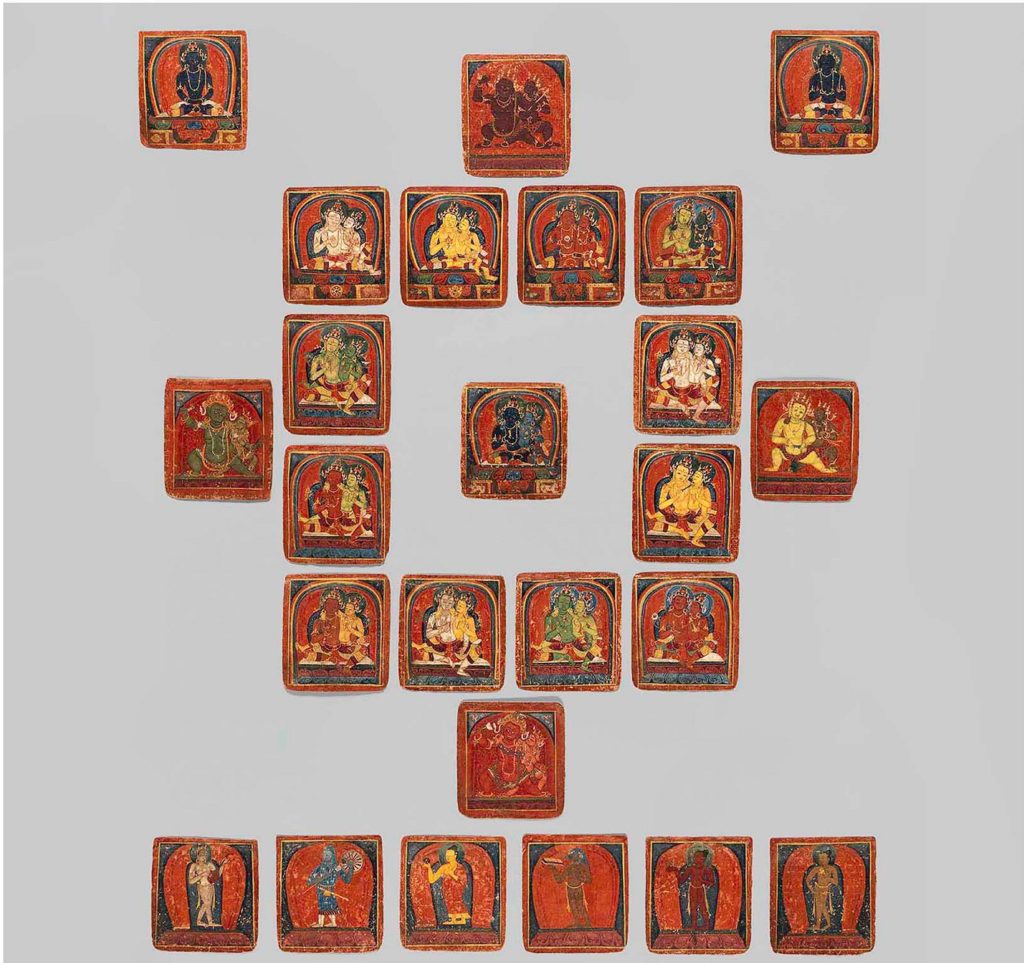
In Tibet, these teachers, or gurus, typically were monks, although religious asceticism remains important even today. In other words, the Indian tantric yogin came to be a monk living within the highly structured monastic community in Tibet. This tension between yogin and monk is hinted at in this mid-14th century painting (9); an inscription on the back perhaps addresses this boundary:
The ascetic practice of patience is holy patience. It is the excellent way to get beyond suffering. This is the word of the Buddha. For an ordained monk to do harm or to hurt others is not the virtuous practice.
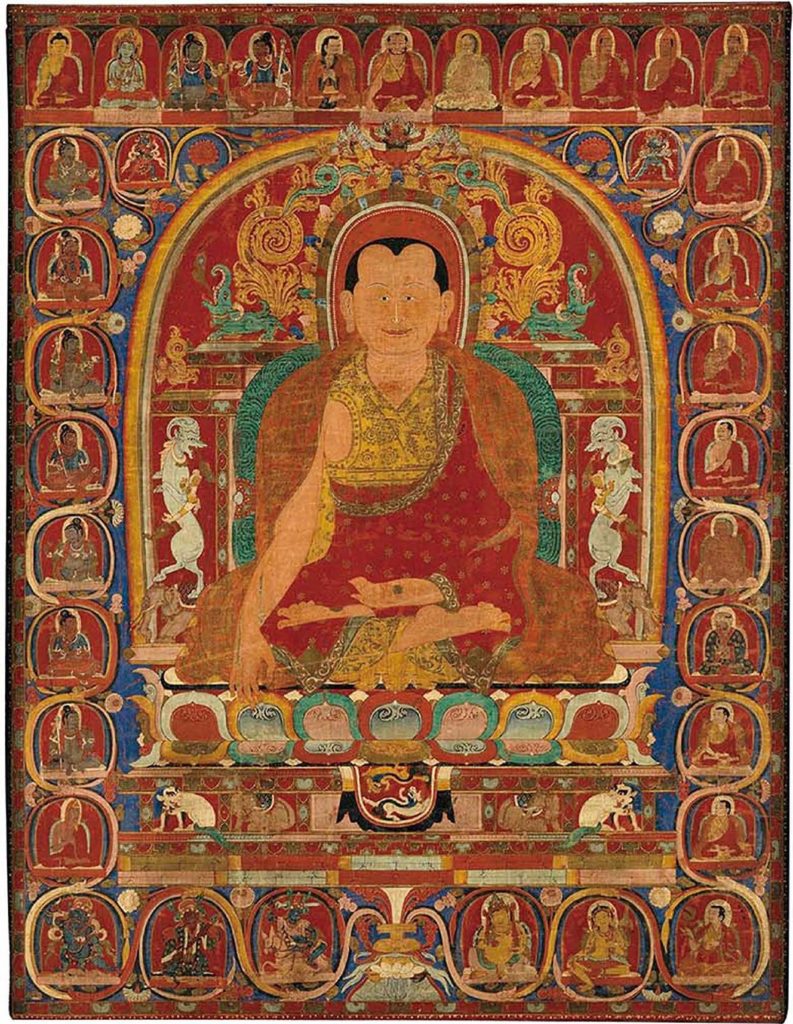
In this work, monks and important figures in the Kagyu School lineage are juxtaposed with their North Indian progenitors, Tilopa and Naropa, seen at the top left next to the Buddha and Vajradhara. The Eight Great Mahasiddhas, along the left side, also speak to this idea of legitimising the monk’s right to practice tantra. Significantly, this Kagyu abbot holds his hand in the bhumisparsha earth-touching gesture, suggesting his status, like that of a Mahasiddha, as an enlightened being.
Secrecy is another important aspect of the tantric tradition, as only a spiritually advanced practitioner should evoke certain deities within the Vajrayana pantheon or psychic damage could result. Hence, a teacher would reveal advanced tantric practices to a student in stages. Secret imagery was also employed by high practitioners for the protection of the monastic community and the kingdom. Works like this late 14th century Raktayamari mandala (10) were also made for the specific use of individuals, as is indicated in an inscription that tells us the painting “was made as the precious possession of the holy lama of Changphuk, the learned, venerable Kunga Lekpa”. He is a known historical figure, who was one of the teachers of the great theologian, Tsong Khapa (1357–1419).
Because this thangka was created for an individual, it was hardly used, and, as a result, the painted surface survives in a pristine and undamaged state (11). Note the extremely fine line work and subtle shading in the figures. The Yoga tantra emphasises the personal use of meditational images such as this Raktayamari mandala. While it would be an oversimplification of a vastly complicated tantric system, it is possible to argue that, through meditation and yogic control of one’s body, it is possible directly to reach enlightenment—perfect control of the body being equivalent to perfect control of the mind.
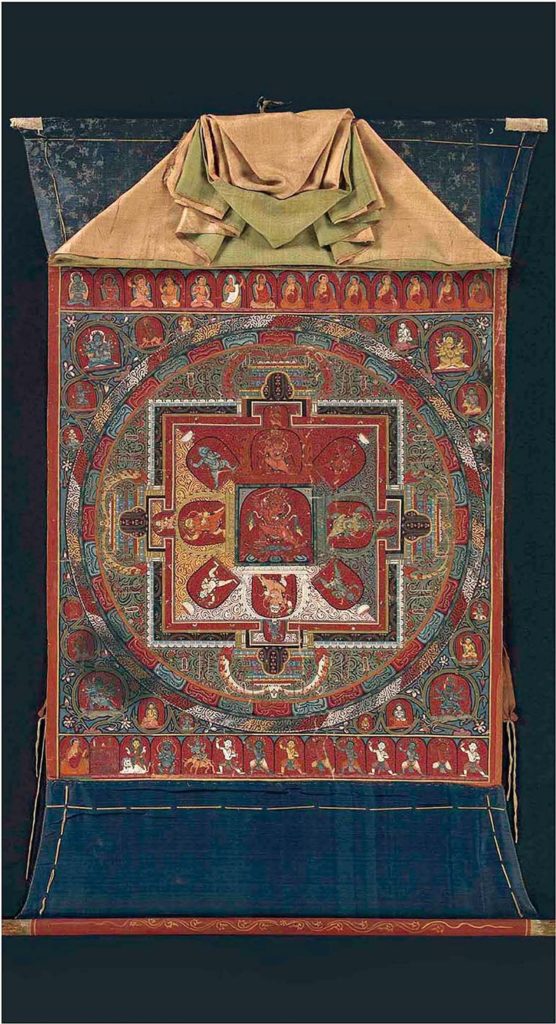

The idea of the hidden and the revealed takes many forms within Tibetan religious practice. For example, Brahmarupa Mahakala (12) has as his true form the ferocious protector Chaturmukha Mahakala, as described in the Guhyasamaja Tantra—a terrible manifestation that would have been inappropriate to show to one not initiated to this deity. Instead, he is presented as a bearded ascetic who blows a thighbone trumpet (kangling). Significantly, the Sakya School image retains some Mahakala iconography, such as the bone ornaments he wears, his skull crown and the skull cup full of gore in his left hand. Brahmarupa Mahakala was the personal attendant of several great Sakya monks, and he is credited with helping to explain the meaning of the Hevajra tantra to the Sakya lama Pakpa—thus reinforcing this tantric idea of the interpenetration of the divine and the human worlds.
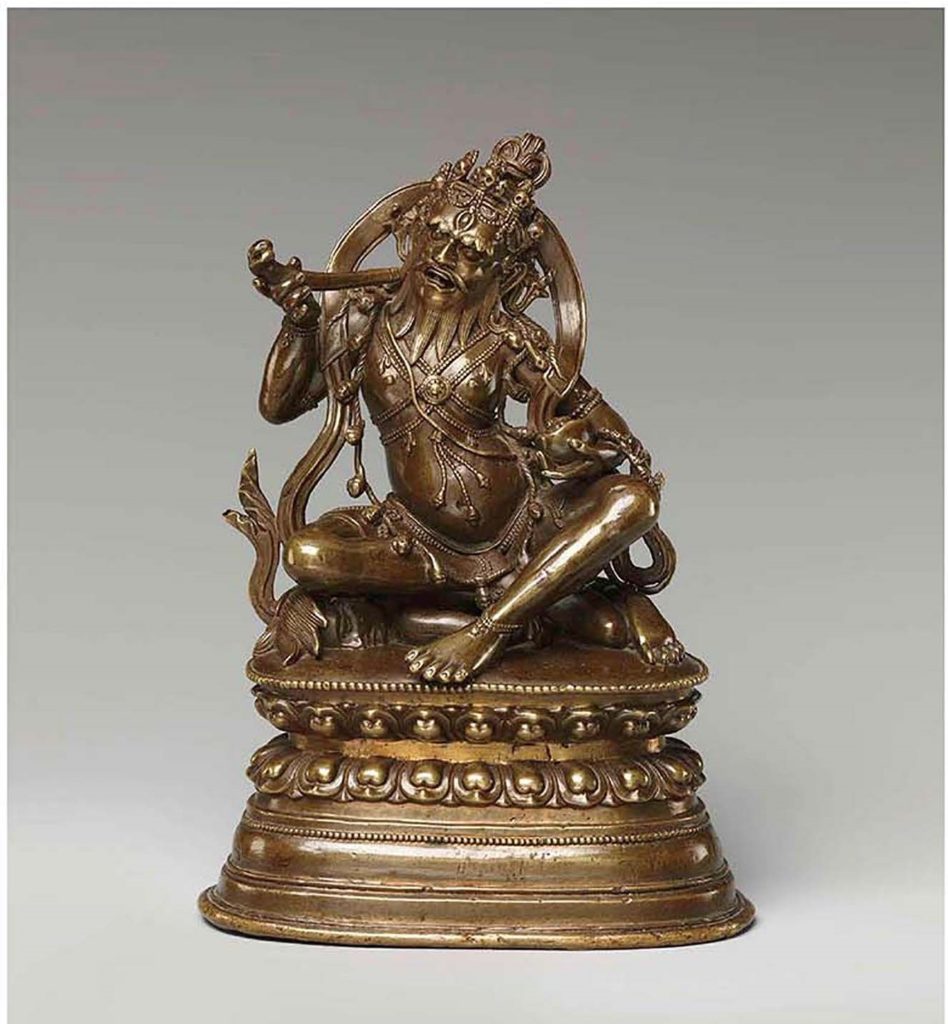
What is hidden can also speak to an alternate or deeper identity of the divine figure. A perfect example is Guru Dragpo, shown here within a swirling mandorla of flame holding aloft a vajra in an aggressive gesture (13). He is the ferocious inner form of the great tantric practitioner and defeater of demons, Padmasambhava, also known as Guru Rinpoche, who appears in the top register (14). The Tibetan Nyingma School traces its lineage to Padmasambhava, and by the 16th century, the offshoot Drugpa Kagyu School had popularised the veneration of Guru Dragpo. This form is part of the “revealed treasure” tradition, which argues that Padmasambhava hid physical treasures (relics, ritual implements, texts and images) as well as “mind treasures” and “pure visions” so that later generations would discover them in order to ensure the continuation of the Buddhist doctrine; it is in this light that Guru Dragpo was revealed.
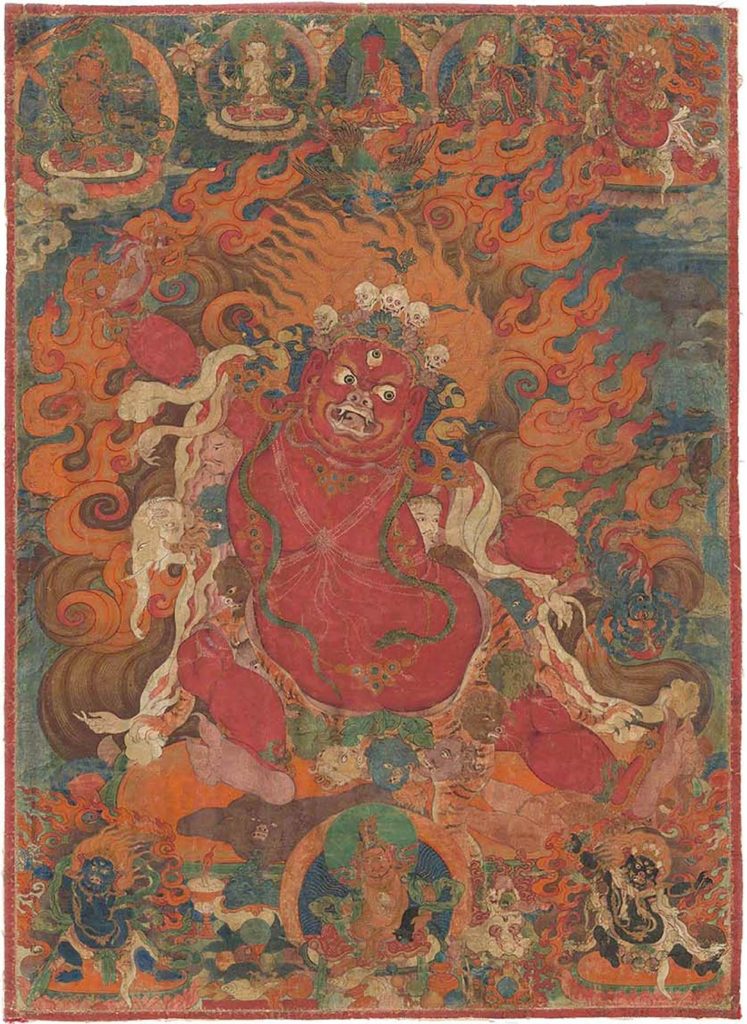
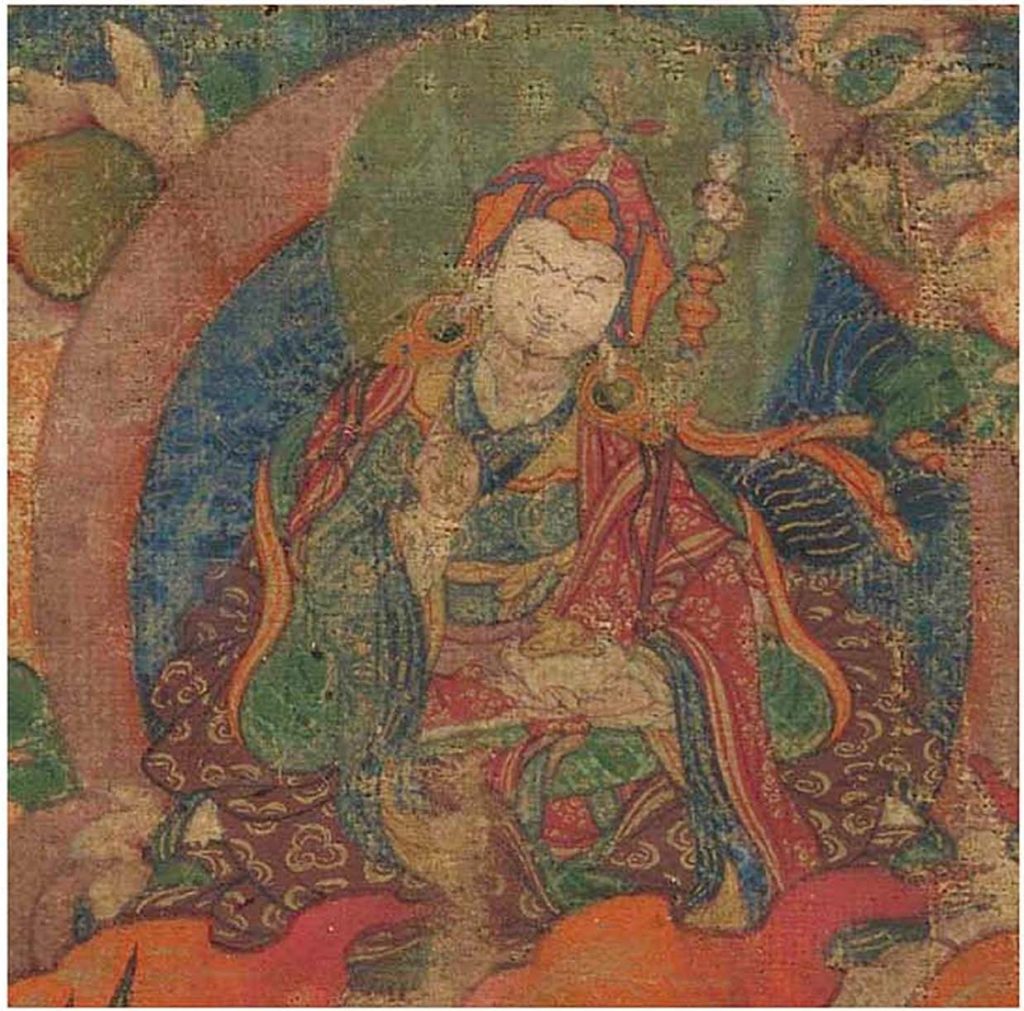
It is important to realise that the complexity of tantra is intentional, even to the point of purposely obscuring the wording of texts; clearly, this inaccessibility was important to making tantra appealing. Certainly, it also played an important role in the formation of specialist practitioners who positioned themselves to conduct rituals on behalf of kings and other powerful patrons. Still, many of the tantric Vajrayana deities are less difficult to understand than one might imagine. Take, for example, this 11th century Manjuvajra from Bangladesh, or eastern India, a tantric form of the bodhisattva Manjushri (15). His three heads, many arms, attributes, weapons and mudras would all suggest a complex tantric interpretation for the image. Fortunately, the Nishpanna Yogavali (Garland of Perfection Yoga), a text written at about the same time as this image was sculpted, provides a precise description of Manjuvajra. Clearly, the text was intended to help a devotee visualise the deity, but it also appears to have been used by artists to create iconographically correct images. The text says he holds a sword, bow, arrows, and a blue lotus—all elements of iconography seen in this image—and is embracing his consort, Prajna, whose presence is implied by his crossed arms.

Manjuvajra is again found on the interior of a late 13th century manuscript cover (16). Here his consort, Prajna, appears in a sexual embrace with Manjuvajra, and again the attributes and mudras described in the Nishpanna Yogavali are present. Initiation to Manjuvajra offers the practitioner wisdom, retentive memory, intelligence and eloquence. In this sense, it is significant that the tantric deity Manjuvajra appears on the inside of the cover for a text. The presence of teachers to either side is also telling, as the subtle meaning of any Buddhist text cannot be realised without the guidance of a guru.

Ultimately, a mandala is the best way to align oneself with Manjuvajra, as this kind of structured presentation allows one to visualise and effectively self-identify with this divine reality. The tiny image of Manjuvajra at the very centre of this diagram (17) is set within circles and squares that map the structure of the universe and, more specifically, the divine realm of this god. The largest ring takes the form of coloured flames then there is a ring of lotus petals upon which sits the square of the “temple”. Framed by four vajra/gateways, as seen in the Hevajra mandala (1), the “temple” rises with sets of walls enclosing bands of subsidiary deities that frame the centre (18).
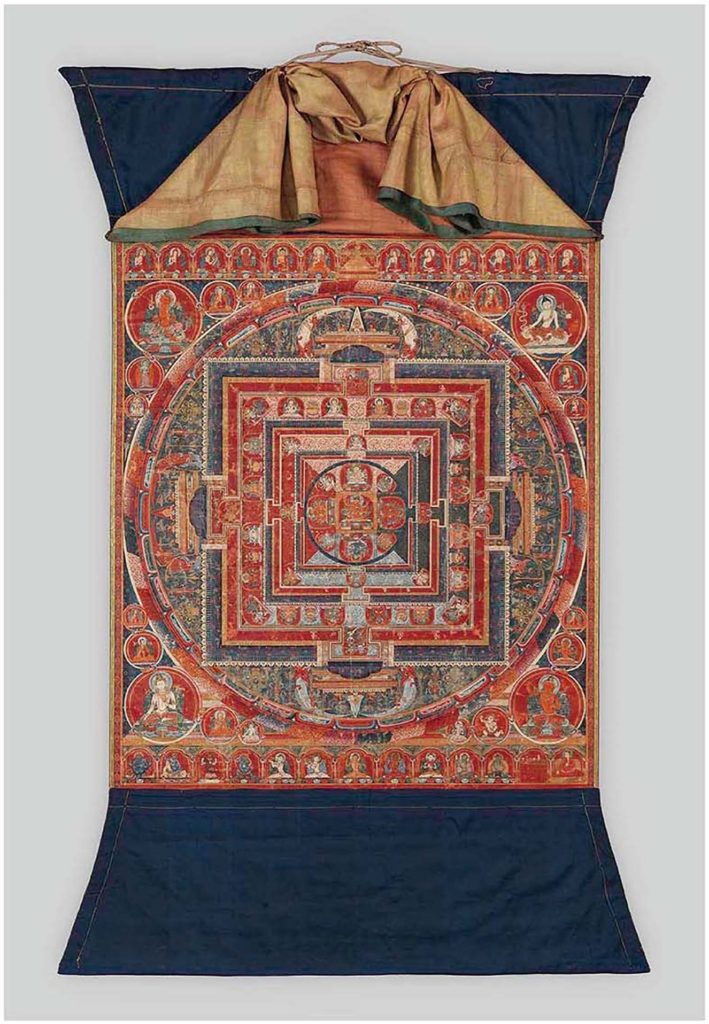
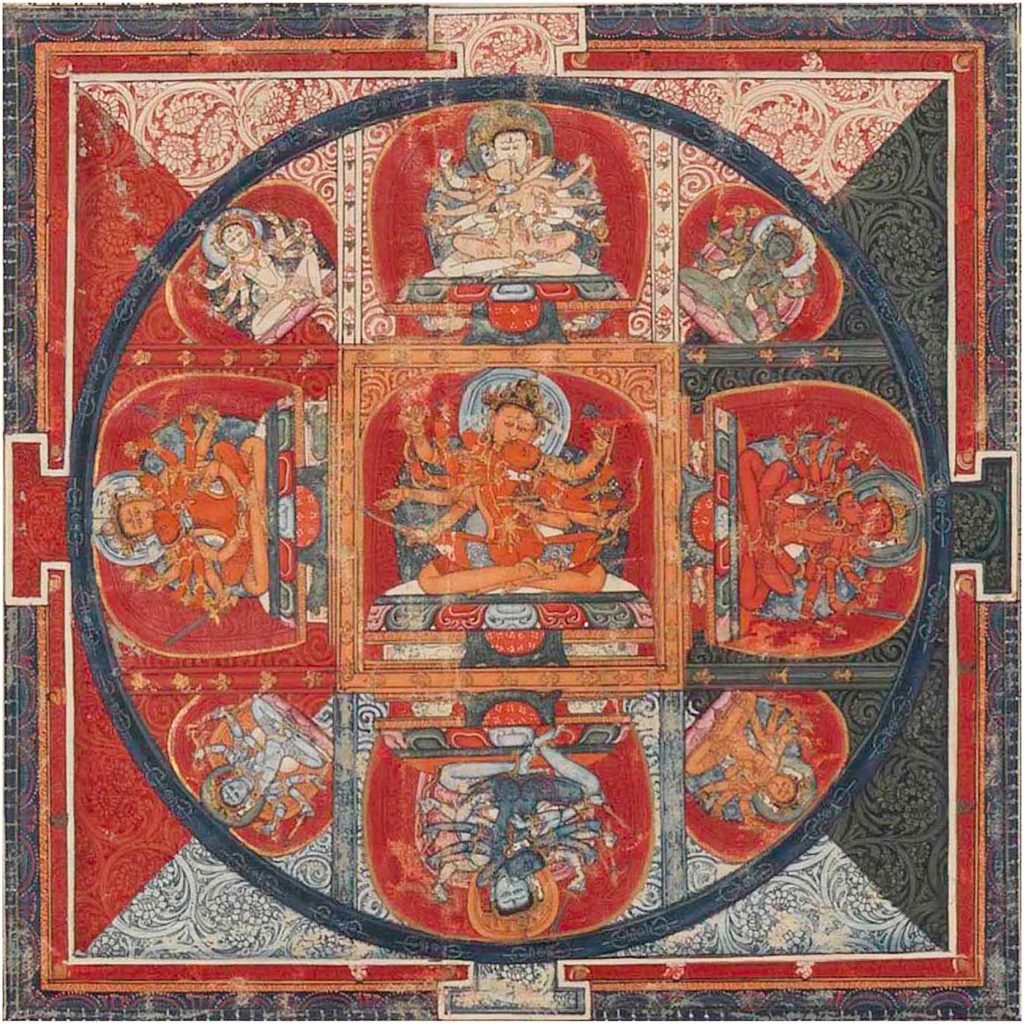
Here we see Manjuvajra and Prajna in sexual embrace—a perfect balance of the male and the female—while colour-coded representations of the couple appear in the four directions. Stepping back, at the corners of the square field of the mandala, set within roundels, are four images of Manjushri (19), an accessible Mahayana bodhisattva who cuts through ignorance. Each is colour-coded to relate to a cardinal direction. Finally, at the top are representations of the Buddha and Manjushri as well as the monastic lineage attesting to the chain of student-teacher relationships. At the base of the mandala are various protector deities, guardian kings and multiple Taras. In the extreme lower right sits a monk who is in the act of perpetually consecrating the mandala.
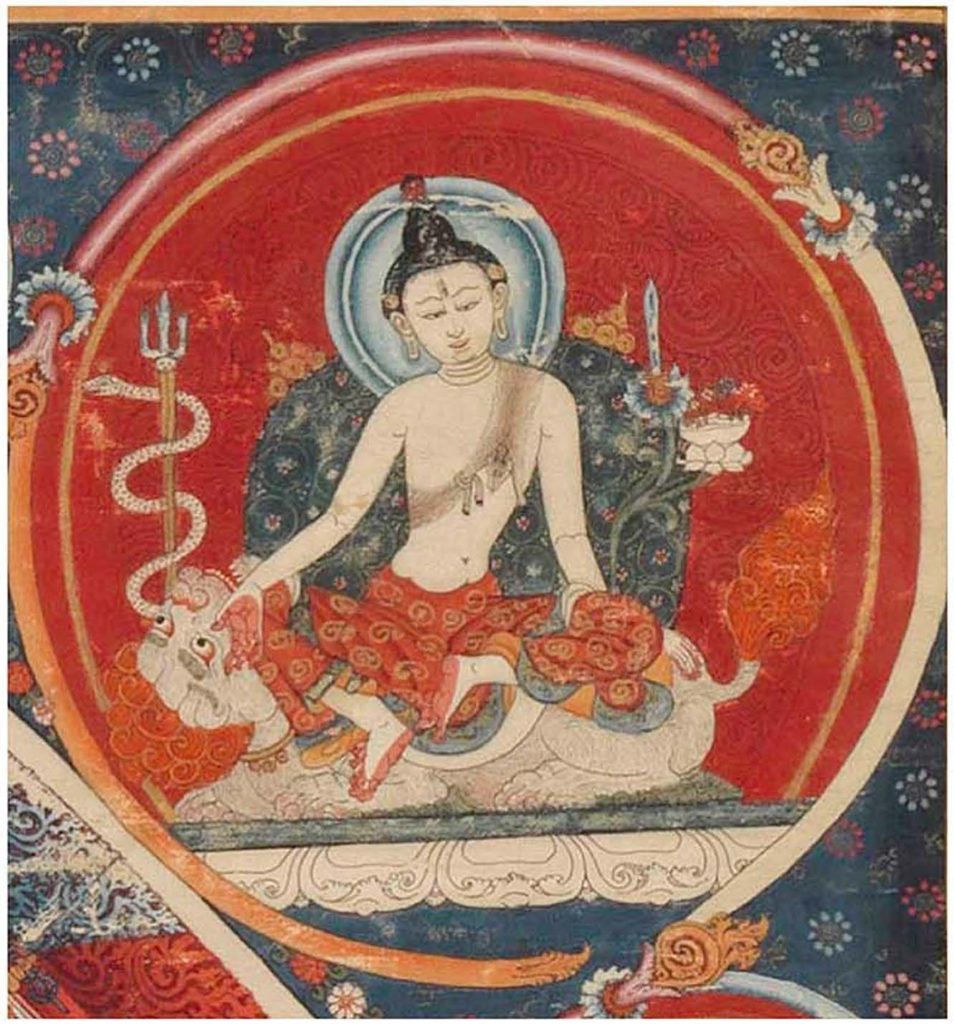
While tantric deities were primarily used by learned monks and ascetics, it is important to remember that much of the ritual was done for the benefit of the public. This lay audience, in fact, also commissioned and donated imagery to move rapidly toward enlightenment. The tantric meditational deity, Vajrabhairava, came to be an especially popular subject for lay donations in Tibet, China and Mongolia in the 18th and 19th centuries. Vajrabhairava is a ferocious form of Yamantaka; he wields weapons in his thirty-six arms while trampling demons under his sixteen legs. A lay patron would donate an image of this powerful deity to evoke him as a destroyer of death. In this sense, Vajrabhairava opens the door for a devotee to break free and escape from the cycle of rebirth and, as a result, to attain enlightenment. Such donations could be quite lavish, but not all images of Vajrabhairava were expensive commissions; take, for example, this 18th or 19th century stucco image from the Gelugpa Mongolian tradition (20). While admittedly it was covered in pure gold leaf, it was the sculptor’s time and skill—not the cost of the materials that gave this image its great presence and inherent power.

Vajrayana Buddhism, with tantric practice at its core, came to be the last great Buddhist tradition to emerge; it was an ideology that was tremendously important in India, Tibet, China, Mongolia, Japan and parts of Southeast Asia. Offering a fast path to enlightenment, tantric Buddhism, with its flexible ideology and powerful deities, had great appeal for ascetics, monks and kings; perhaps most significantly, however, it was also attractive to the broad public, all of whom shared in the goal of perhaps reaching enlightenment in this life.

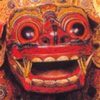 Subscribe
Subscribe Calendar
Calendar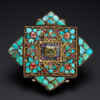 Links
Links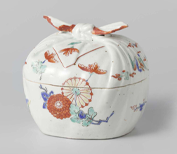 Gift
Gift


